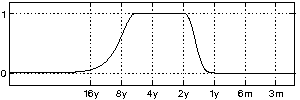
-
[an error occurred while processing this directive]

 Slow climate phenomena such as ENSO are known to interact with the
annual cycle. One can say that slow phenomena modify the seasonal
variations such that, for example, temperature conditions become
colder or warmer in specific regions. In other words, seasonal
variations change the effect of the slow climate phenomena. These
interactions are likely to be small in the equatorial regions where
the seasonal variability is small. Therefore, for example, El
Niño (whose effect is most noticeable in the equatorial
regions) is easily observable in the data. However, slow climate
variations can exist in the polar regions as well. They could be
discovered by investigating consistent slow changes in seasonal
variations because of the dominancy of the annual cycle in those
regions.
Slow climate phenomena such as ENSO are known to interact with the
annual cycle. One can say that slow phenomena modify the seasonal
variations such that, for example, temperature conditions become
colder or warmer in specific regions. In other words, seasonal
variations change the effect of the slow climate phenomena. These
interactions are likely to be small in the equatorial regions where
the seasonal variability is small. Therefore, for example, El
Niño (whose effect is most noticeable in the equatorial
regions) is easily observable in the data. However, slow climate
variations can exist in the polar regions as well. They could be
discovered by investigating consistent slow changes in seasonal
variations because of the dominancy of the annual cycle in those
regions.
In the following experiment, we analyze surface temperature data in
order to find climate variations prominent in the interannual
timescale. The experiment is similar to the one presented here except that the interactions with the
annual cycle are now taken into account. The same temporal filter
shown on the right was used to emphasize the timescale of interest.
| Time course | Average effect, °C | Winter-Summer effect, °C | Spring-Autumn effect, °C |
For comparison, the results of the analysis without taking into account the seasonal effects are reproduced below.
| Surface temperature, °C |
You are at: CIS → Most prominent interannual phenomena with seasonally changing effects
Page maintained by webmaster at cis.hut.fi, last updated Tuesday, 03-Apr-2007 12:28:42 EEST